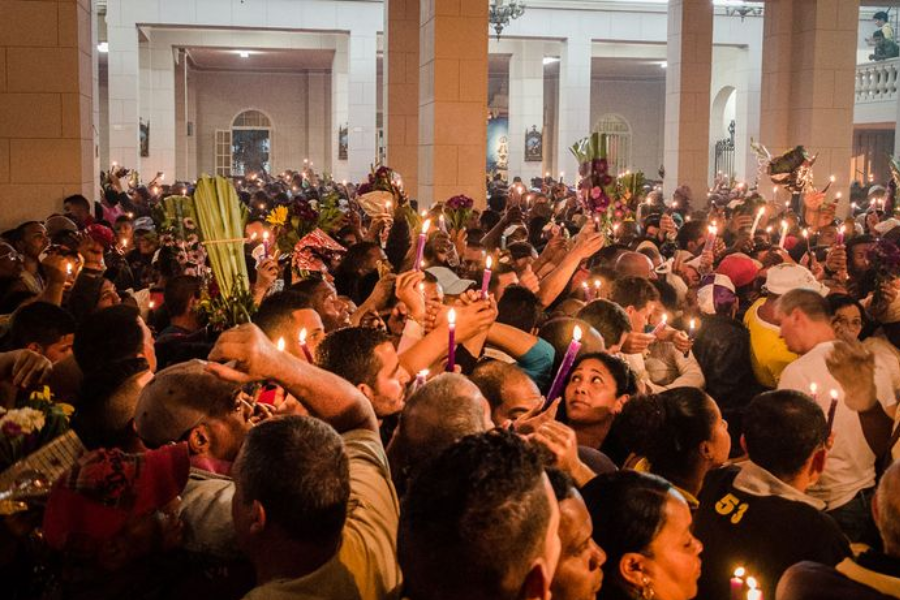St. Lazarus Abba Kwi Cuban: An In-Depth Guide
Who is St. Lazarus?
St. Lazarus, a notable figure within Christian tradition, holds a special place in both biblical narratives and Cuban religious practices. He is known primarily through two distinct biblical accounts:
- The Lazarus of Bethany: This Lazarus is perhaps best known for his resurrection by Jesus after being dead for four days, as narrated in the Gospel of John. This miracle underscores themes of faith, hope, and divine power.
- The Poor Beggar Lazarus: Another biblical account, found in the Gospel of Luke, tells of a poor man named Lazarus who suffers in life but finds solace in the afterlife, contrasting sharply with a rich man who ignored him. This parable highlights themes of social justice and the moral imperatives of compassion and humility.
In Cuban religious practice, St. Lazarus assumes a unique identity that merges elements of these biblical depictions with influences from Yoruba spirituality, reflecting the rich syncretic nature of Afro-Cuban religion.
St. Lazarus in Cuban Tradition
In Cuba, St. Lazarus is revered not only as a Christian saint but also as a key figure in Santería, a religion that fuses Catholicism with Yoruba traditions from Africa. This syncretic practice creates a distinctive religious experience where:
- St. Lazarus is Identified with Babalu Aye: In Yoruba religion, Babalu Aye is an orisha (spirit) associated with illness, healing, and the plight of the poor. This alignment with St. Lazarus emphasizes shared themes of suffering and recovery.
- Iconography: In Cuban traditions, St. Lazarus is depicted as a frail, sick man clad in rags, often leaning on crutches and accompanied by dogs. This portrayal resonates deeply with both the Christian and Yoruba aspects of his character, symbolizing compassion, resilience, and the struggle for healing.
Understanding Abba Kwi
The term “Abba Kwi,” while not as widely recognized as other religious terms, holds significance in certain Cuban spiritual circles. It reflects a respectful title or form of veneration within the context of Santería practices dedicated to St. Lazarus. The exact meaning may vary among different communities, but it generally denotes a revered position within the syncretic religious framework honoring St. Lazarus.
The Significance of St. Lazarus Abba Kwi in Cuban Culture
A Symbol of Faith and Resilience
In Cuban culture, St. Lazarus represents more than just a religious figure; he embodies the spirit of endurance and hope. His portrayal as a figure who endures hardship yet offers healing and compassion mirrors the resilience of many Cubans who have faced historical and social challenges. For marginalized communities, St. Lazarus is a potent symbol of perseverance and divine support.
The Annual Pilgrimage to El Rincón
One of the most significant expressions of devotion to St. Lazarus is the annual pilgrimage to El Rincón, a village near Havana, held on December 17th. This event attracts thousands of pilgrims from across Cuba and beyond. Participants engage in various acts of devotion, including:
- Crawling on Hands and Knees: Many pilgrims perform this ritual to fulfill promises or request favors, reflecting deep personal devotion and penance.
- Carrying Heavy Crosses: This act of penitence is a physical manifestation of devotion and sacrifice.
- Lighting Candles and Offering Flowers: These acts of reverence are performed at the shrine, honoring St. Lazarus and seeking his blessings.
This pilgrimage is a vibrant blend of Christian and Afro-Cuban practices, showcasing the unique religious identity of Cuba.
Devotional Practices
Devotees of St. Lazarus Abba Kwi often maintain home altars where they perform daily or weekly rituals. Common practices include:
- Lighting Candles: Candles are lit, particularly on Wednesdays, to request blessings or healing from St. Lazarus.
- Offering Flowers and Herbs: These offerings are symbols of respect and devotion.
- Food Offerings: Items such as roasted pork and fruits are offered, reflecting traditional Cuban culinary practices.
- Small Dog Statues: Representing the dogs said to have licked Lazarus’s wounds, these statues symbolize compassion and loyalty.
These practices emphasize the accessibility of St. Lazarus Abba Kwi, making him a figure who is closely connected to the everyday lives of his devotees.
St. Lazarus and Santería: A Deep Connection
The Role of Babalu Aye
In Santería, St. Lazarus is often syncretized with Babalu Aye, a significant orisha who represents sickness, disease, and healing. The blending of St. Lazarus and Babalu Aye exemplifies how Afro-Cuban religions merge African spiritual elements with Catholic symbolism. Practitioners of Santería engage in various rituals dedicated to Babalu Aye, seeking both relief from illness and protection from future harm.
Rituals and Offerings
Santería rituals dedicated to Babalu Aye/St. Lazarus often include:
- Sacrifices of Small Animals: A traditional offering to Babalu Aye that reflects the Yoruba roots of Santería.
- Herbal Baths: Used for spiritual cleansing and invoking the healing powers associated with Babalu Aye/St. Lazarus.
- Dance Ceremonies: Energetic drumming and dancing are integral to Santería rituals, showcasing the influence of African traditions within the religion.
These rituals highlight the dynamic nature of Cuban religious practices, where diverse spiritual needs and influences come together.
The Healing Aspect of St. Lazarus Abba Kwi
Invoking Healing Powers
St. Lazarus Abba Kwi is revered for his perceived healing powers, whether for physical ailments or emotional distress. Devotees frequently turn to him for relief and protection. Many wear medallions or carry images of St. Lazarus as talismans to safeguard against illness.
Testimonies and Miracles
Numerous stories of miraculous healings attributed to St. Lazarus have been passed down through generations. These testimonies reinforce the belief in his ability to listen and intervene, adding to his mystique and significance in the lives of his followers.
The Cultural Fusion: Christianity and Afro-Cuban Religion
Cuban spirituality exemplifies a unique blend of Christianity and African religious traditions. The veneration of St. Lazarus Abba Kwi illustrates how:
- Christianity and African Spirituality Merge: Creating a distinctive religious identity that integrates elements of both faiths.
- Syncretism Facilitates Coexistence: Practitioners often participate in both Catholic and Santería rituals, reflecting a harmonious blending of beliefs.
- Cultural Traditions Evolve: As new generations reinterpret religious practices, the fusion of faiths continues to evolve, enriching the spiritual landscape of Cuba.
This cultural fusion underscores Cuba’s rich spiritual diversity and the adaptability of its religious practices.
How to Honor St. Lazarus Abba Kwi
For those wishing to honor St. Lazarus Abba Kwi, consider the following practices:
- Create an Altar: Set up a dedicated space at home with a statue or image of St. Lazarus, accompanied by candles, flowers, and other offerings.
- Light a Candle: Light candles on Wednesdays, traditionally associated with St. Lazarus, to seek his protection and blessings.
- Offer Prayers: Recite prayers asking for healing, protection, or guidance, especially during times of difficulty.
- Attend a Pilgrimage: If in Cuba, participating in the annual pilgrimage to El Rincón offers a profound connection to St. Lazarus’s legacy.
Modern-Day Relevance
St. Lazarus Abba Kwi remains a significant figure not only in Cuba but among the Cuban diaspora worldwide. His symbolism continues to resonate, representing:
- Perseverance Through Suffering: His own struggles symbolize hope for those facing hardships.
- Community and Compassion: Devotion to St. Lazarus fosters solidarity among those who share his spiritual beliefs.
- Healing and Recovery: Both physically and spiritually, St. Lazarus embodies the hope of overcoming challenges and emerging stronger.
Conclusion
St. Lazarus Abba Kwi Cuban is more than a religious figure; he is a symbol of resilience, hope, and cultural fusion. His influence extends from the grand pilgrimage to El Rincón to personal devotional practices at home. Through the merging of Afro-Cuban and Christian values, St. Lazarus embodies a rich cultural and spiritual heritage, illuminating the unique tapestry of Cuban religious identity.
Facts:
- Lazarus of Bethany: Known for his resurrection by Jesus, as detailed in the Gospel of John. This miracle emphasizes faith and divine power.
- The Poor Beggar Lazarus: Featured in the Gospel of Luke, this parable highlights themes of social justice and the contrast between wealth and poverty.
- Syncretic Nature:In Cuban religious practices, St. Lazarus is syncretized with Babalu Aye, an orisha from Yoruba spirituality, symbolizing illness, healing, and resilience.
- Iconography:Depicted as a frail man in rags, often with crutches and accompanied by dogs, merging elements from both Christian and Yoruba traditions.
- Cuban Pilgrimage:The annual pilgrimage to El Rincón on December 17th includes rituals like crawling on hands and knees, carrying crosses, and lighting candles, blending Christian and Afro-Cuban practices.
- Devotional Practices:Home altars often feature candles, flowers, food offerings, and small dog statues. Devotional practices include lighting candles on Wednesdays and performing rituals for healing and protection.
- Rituals in Santería:Babalu Aye rituals in Santería include sacrifices, herbal baths, and dance ceremonies, reflecting the Afro-Cuban religious synthesis.
- Healing Powers:St. Lazarus Abba Kwi is revered for his healing abilities, with many attributing miraculous recoveries and protection to his intervention.
- Cultural Fusion:Represents the blend of Christianity and Afro-Cuban religion, illustrating how diverse spiritual elements coexist and evolve in Cuban culture.
Summary:
St. Lazarus Abba Kwi Cuban is a significant religious figure in Cuban spirituality, merging elements of Christian and Yoruba traditions. Known for his biblical roles as both the resurrected Lazarus and the beggar in parables, he is syncretized with Babalu Aye in Santería, symbolizing healing and resilience. In Cuban culture, he is honored through an annual pilgrimage to El Rincón, where devotees engage in acts of devotion such as crawling on hands and knees and carrying crosses. Home altars with candles, flowers, and small dog statues are common, and Santería rituals involve sacrifices, herbal baths, and energetic dance ceremonies. St. Lazarus Abba Kwi remains a potent symbol of perseverance, community, and divine support, resonating with the Cuban diaspora and beyond.
FAQs:
- Who is St. Lazarus in Christian tradition?
St. Lazarus appears in two biblical accounts: as the man resurrected by Jesus in the Gospel of John and as the poor beggar in the Gospel of Luke. - What is the significance of St. Lazarus in Cuban religion?
In Cuba, St. Lazarus is revered as a key figure in both Christianity and Santería, where he is syncretized with Babalu Aye, an orisha associated with illness and healing. - How is St. Lazarus depicted in Cuban traditions?
He is depicted as a frail man in rags, often with crutches and accompanied by dogs, symbolizing compassion and resilience. - What are common devotional practices for St. Lazarus Abba Kwi?
Devotional practices include setting up home altars with candles, flowers, and food offerings, as well as lighting candles on Wednesdays and performing rituals for healing and protection. - What is the significance of the pilgrimage to El Rincón?
The pilgrimage to El Rincón on December 17th is a major expression of devotion, involving rituals such as crawling on hands and knees, carrying heavy crosses, and lighting candles, blending Christian and Afro-Cuban traditions. - How are Santería rituals connected to St. Lazarus?
In Santería, St. Lazarus is syncretized with Babalu Aye, and rituals include sacrifices, herbal baths, and dance ceremonies, reflecting the integration of African and Christian elements in Cuban spirituality. - What role does St. Lazarus play in the lives of his devotees?
St. Lazarus Abba Kwi symbolizes perseverance and divine support, with devotees turning to him for healing, protection, and hope, both in personal devotion and in larger religious practices.





